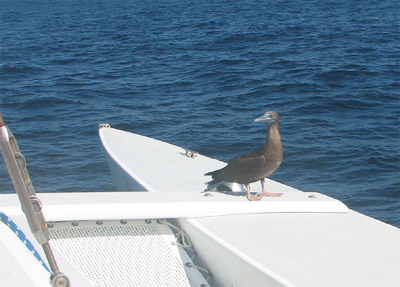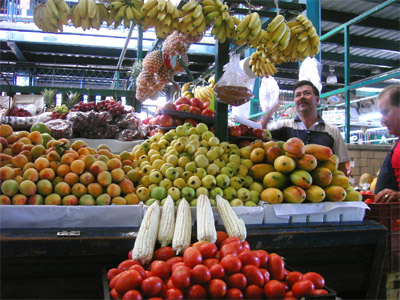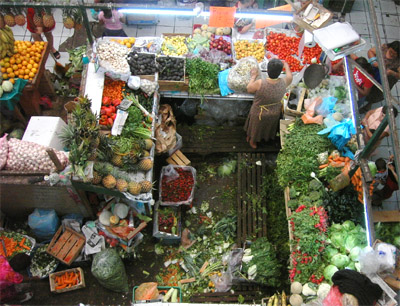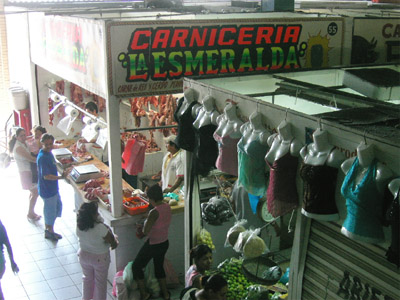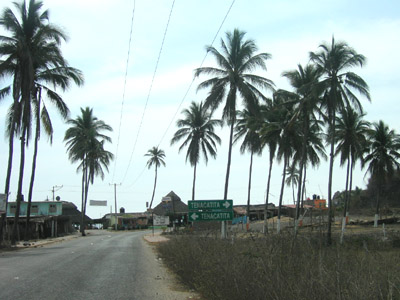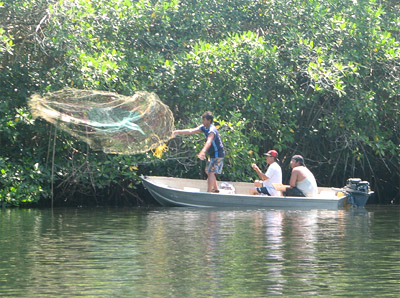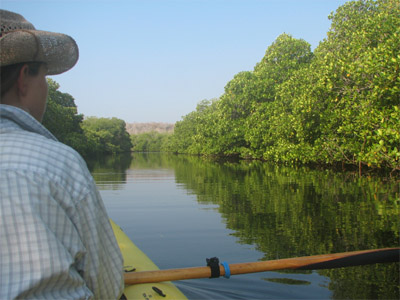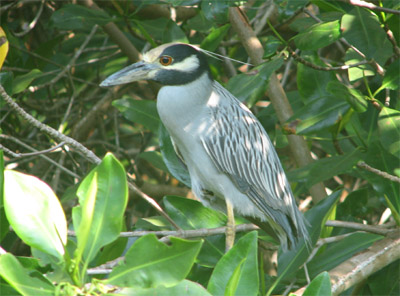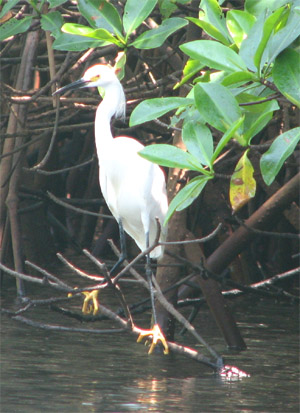Zihuatanejo to Papanoa (Mar. 29-Apr. 8)
Friday, April 7th, 2006Zihuatanejo I think has suffered a bit from the tourist mania; massive cruise ships anchor out in the middle of the bay now three times per week and ferry all passengers to shore for the day to buy random trinkets at the millions of gift shops and ‘artisan markets’ lining the first four blocks parallel to the beach. As you walk along the beach on the first tier of restaurants/gift stores, everyone tries to entice you inside by listing off the various specialties of the day, most often, “cold beer.†Heading inland block by block you pass bars and quaintly decorated restaurants with English menus displayed on wooden podiums outside, and of course, more trinket shops and silver shops. Despite all this, the place is very friendly and the main beach in front of town is still taken up nearly exclusively by the fishermen and their fishing market. Once you walk beyond the four-block tourist section, the town reverts abruptly into Normal Mexican Town with pharmacies, central Mercado, hardware stores, tiendas of all sorts, and ice cream/agua shops.
We ate at a couple of barbecued chicken places, which were very good (I wasn’t a huge chicken fan in general); the chicken is served with a cole slaw and rich rice (cooked with chicken broth perhaps?). The central market is pretty good, although a better bet for vegetables are the veggie stores lining the streets off the back of the market; the prices are better and you have a wider selection of quality since there are maybe twenty of the stores all in a row. A bad day to go to market is when a cruise ship is in town; I tried to buy a couple of kilos of tomatoes and limes, the guy looked me up and down and then named a shockingly high price for the stuff; I just poured the limes back into the vat and left. Highlights were the large bunches of Thai basil that everyone was selling—for cooking? Not sure. We saw that people just put the bunches in vases like flowers. We hadn’t had basil in a very long time and I made pesto with almonds and a bit of parmesan we managed to find in Manzanillo. Also, I was overjoyed to finally find decent coffee in a small shop in the hottest corner of the indoor market (that’s how you find it; wander around the edges of the market until the heat level attains a dizzying level and there will be the coffee stall). They make three different roasts: mild, medium, and strong—the strong is indeed black and oily and they will grind it for you. We bought a pound for 30 pesos (less than $3). Oaxaca cheese is also very good here; the stuff we tried further north was always pre-packaged in saran wrap and tasted primarily of saran wrap. Bleargh. This stuff was excellent and slightly sharp; we went back three times to get more before heading out of town.
The first day in town we dinghied ashore and made it about two blocks before we heard someone calling “Joshua!†And it was Sundi, Joshua’s dad’s ex-wife, who we haven’t seen in probably ten years. Small world; she said she was sitting on the beach near where we anchored and recognized the boat (and port-a-bote) from the website photos! We had a great time with her and Steve, her husband, who came out to the boat (the Baby Jade) for drinks; later we all headed to town to a restaurant they liked called Any’s, which is famous for the pozole (it was indeed mighty tasty). She said that she has been coming to Zihuatanejo for many years and it is only in the last couple of years that the tourist business took over the town.
Tourist season was actually winding down by the time we were there; Rick’s Bar, the main cruiser’s bar was closing the next week for the season. The waitress had some interesting statistics: 80% of the customers at Rick’s were Americans, and 80% of those were cruisers. When we left, there were maybe ten cruising boats left in the bay.
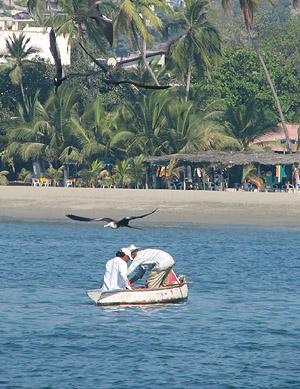
Some fisherman in a small rowboat collecting their nets; the frigate birds were going nuts. There is also a group of guys who dive for some sort of shellfish (we never figured out which one; we guessed clams/chocolates) in the bay; they floated small inner tubes with baskets around and dove underneath them for the shellfish. They were out every day and a small group that dove near our boat let out frequent whoops and hollers as they dove.
Papanoa
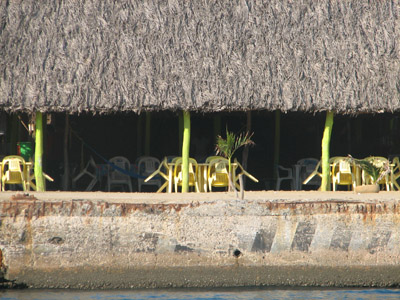
We arrived after dark to the small harbor at Papanoa, dodged the night panga fishermen, who were thankfully well lit, and anchored just inside the jetty. There were no other tourists here at all (there would be, however, come Semana Santa) and the place was pretty mellow. The town itself was very small with one road leading up around the hill; on the outer side, there was a beach with a few palapa restaurants and small funky hotels. Velella showed up the next afternoon and we kayaked with them north outside the harbor to try to surf; however, the sand was so well packed that we were unable to anchor the kayaks outside the breaks and only a Crazy Person (not me) could land through the waves. We headed back to town and hauled the boards over to the palapa restaurant side where we mostly just swam in the waves—the, um, break just wasn’t ripping and the waves were all blown out anyway (cough cough). We later ran into the one resident gringo, an retired guy named Frank Brink from Coos Bay, OR, who lived in a groovy shack at the edge of town, who had been there for over fifteen years, and who was delighted to meet someone also from Coos Bay (Cameron was from the Oregon coast and he and Jenny had lived in Charleston).
From Papanoa, we sailed overnight to Acapulco. The entire trip I had what fragments of Love Boat theme I could remember (not much) stuck in my head. Woe. Exciting and New Woe.
